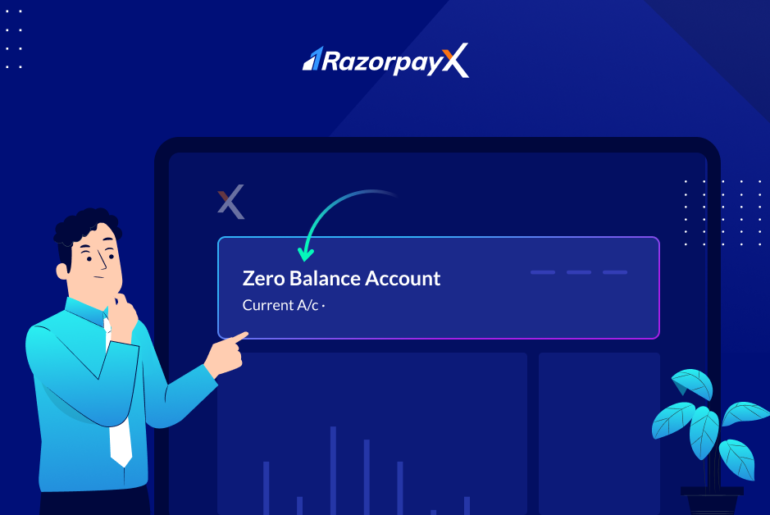Digital banking started taking shape in India during the late 1990s. With increased transparency and cost-efficiency, digital banking has paved the way for safer and faster financial transactions.
Read on to know how businesses can benefit from various digital banking services.
Table of Contents
What is Digital Banking?
Digital banking is the automation of traditional banking services through a digital platform. There are many advantages to digitally-enabled banking, not just for the user, but also for banks.
Financial institutions offering their services online with digital banking do away with tedious paperwork like cheques, demand drafts, and pay slips.
Digitally-enabled banks allow users to access all banking services 24×7 without the need to personally visit the bank branch – all you need is a mobile phone or a computer!
Digital Banking Products & Services
The various types of products and services are as follows:
- Bank Statements: Account holders can view or download their bank statements for any period at any time, without having to go to their bank’s branch to get their passbook updated.
- Mobile Banking: Mobile banking is digital banking through an app designed for smartphones and tablets. These apps allow users to make and receive payments, view account balances, invest in fixed deposits, and more
- Fund Transfer: Digital banks provide alternatives such as NEFT, IMPS, RTGS, and UPI which have eradicated the need for cheques or having to go to the bank to transfer money.
- Bill Payments: Auto-debit feature allows users to set up automatic payments for bills– users don’t have to miss paying a bill.
- Finance: An account holder can invest, raise loans, and open fixed deposit accounts through digital banking.
Benefits of Digital Banking for Businesses
Digital banking has benefited every part of the financial ecosystem – users, financial institutions, banks, governments, and businesses.
- Efficiency and convenience
Businesses are no longer tied to the bank’s working hours – they can access all the services they need 24×7. This feature is beneficial especially when transactional activities occur at a high rate.
- Improved usability
The integrated features of KYC and AML enable customers to open accounts from their own homes. In addition, online ID verification systems and risk assessment procedures enable banks to serve customers easily and quickly.
- Cost Saving
Digital software for banking reduces the number of steps and people involved in daily transactions, which in turn reduces the risk of costly financial errors.
- More collaboration with banks
More businesses are becoming open to collaborating with banks, which is seen as an opportunity to connect and strengthen financial relationships.
- Personalized services
Digital banks offer users informational and engaging content – financial options, educational resources, and interactive tools.
- Variety of features
Digital banks offer features that an established bank cannot provide to its customers – investing in cryptocurrencies, gold, or stock markets directly through the online banking app.
Digital Banking vs Online Banking
| Digital Banking | Online Banking |
| An umbrella term for everything to do with banking that is done digitally | A part of digital banking where users can take all their banking processes online |
| Includes actions like payroll, accounting, vendor management, and more | Includes daily transactions like payments, balance checking and bill payments |
Digital Banking Risks
While digitally-enabled banking is undoubtedly a blessing to the financial industry, there are certain risks that we have to keep in mind:
- Information and Cyber-security Risk
- Operational Risk
- Personal Conduct Risk
- Technology Stability and Resilience Risk
- Regulatory Risk
- Third-party Risk
- Money Laundering Risk
How Can RazorpayX help with Safe & Secure Digital Banking?
The various ways in which RazorpayX can help businesses are as follows:
- Easy credit and collateral-free corporate cards
- Automated payment facility
- Smart dashboard for easy accessibility
- Integrated access via desktop, laptop, mobile, or smart-watch
- Multi-user experience for CAs and your finance team
- No cooling off period
- No transfer limits
Future of Digital Banking in India
Digital banks, neobanks, and challenger banks have brought a fresh, new perspective to the dusty, obsolete banking industry.
As per reports, digital banking is at an inflection point with the market, projecting to grow at a compound rate of 23.1% from 2022 to 2030.
It is evident that the future of finance involves online banking services.
However, this is only possible with the acceptance of digital banks as a substitute for traditional banks.
There is not a single business or bank that doesn’t interact with digital banks in some way or the other. Will you be left behind?
Sign up to RazorpayX today to experience the best kind of digital banking.
FAQs
1. Is digital banking safe?
Contrary to the opinion that digital banking poses security concerns, most people will be surprised that it is much safer in comparison to branch banking. While digital banking portals are prone to hacking and vulnerabilities, banking institutions are investing a lot to enhance their security.
2. When did digital banking start in India?
Digital banking started taking shape in India during the late 1990s. ICICI bank was the first one to introduce this service to their retail customers. However, it gained popularity in 1999 with reduced internet charges and increased awareness.
3. What is operational risk in digital banking?
The operational risk or transactional risk is the most common type of digital banking risk. It includes incorrect transaction processing, compromises in data privacy, non-enforceability of contracts, unauthorized access, and many more.
4. What is the use of message alerts in digital banking?
Whenever an activity takes place in an individual's bank account, he/she gets instant alerts through messages. Such alerts are useful in preventing any fraudulent activities from taking place in anyone's bank account.
5. What are the various types of digital banking services for businesses?
Some of the popular digital banking services include UPI (United Payment Interface), mobile wallets, multi-currency transactions, Point of Sale Machines (PoS), etc.



